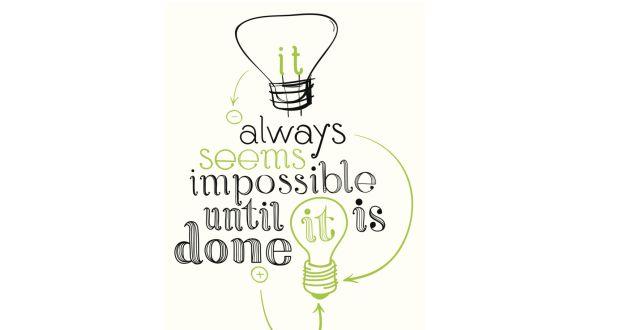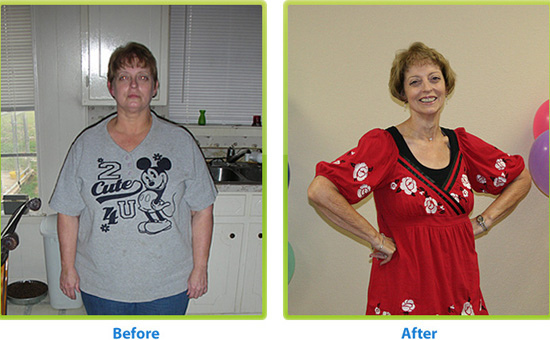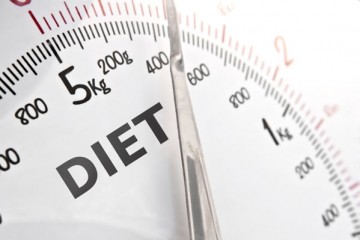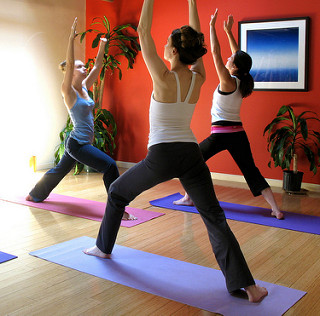How to Lose Weight in a Comfortable Way
Many people have tried to lose weight using extremely difficult workouts and complicated or overly restrictive diets. These programs can be confusing, expensive and feel too hard to maintain long-term. Studies have shown that weight loss is easier and more comfortable when you make more subtle changes over longer periods of time. In addition, it's easier to maintain the weight you've lost.[1] With a few tips and tricks you can lose weight and improve your overall health without using an uncomfortable or difficult diet program.
Steps
Part 1 Modifying Your Food Choices
-
1
Journal your food for a week. Write down everything you eat in one week. Keeping track of all your meals, snacks, and beverages will help you get a good idea of what your diet looks like. You'll be able to learn a lot from this information - like what good eating habits you have and what ones might need to change.[2]
- Include work days and weekend days. You typically eat differently on your days off than you do on a more scheduled weekday.[3]
- Take some time and circle or highlight any problem areas you see. For example, take note of nighttime or boredom snacking or extra large portions.
- Be sure to keep honest and accurate notes of everything. This exercise won't be as helpful if you're not accurate with your reporting.
-
2
Eat smaller portions. Counting calories or points, measuring portions or avoiding certain food groups can make dieting frustrating and unappealing. To make life easy, try eating smaller portions. Even without changing the foods you eat, smaller portions automatically cut out some calories and may result in weight loss.[4]
- If you don't want to measure specific portions, use plates or bowls that will limit how much food you can consume at one sitting. Use salad or appetizer plates, smaller bowls or try using a smaller fork to eat with.
- Drink a glass of water before eating. This will help you feel more satisfied and curb your hunger before a meal which could result in smaller portions.[5]
- Listen to your body. If you pay attention and take your time eating, you'll notice you feel satisfied with a smaller portion. Eating too fast or not paying attention to how you feel sets you up to finish off larger portions that you actually need.
-
3
Always include a fruit or vegetable. Fruits and vegetables are low calorie, nutritious foods that can help aid weight loss. If you make half of your portions a fruit or a vegetable, this will help cut down on overall calories and help support weight loss.[6]
- Choose a variety of different fruits and vegetables each day. Try to go for different colors throughout the day as well. Each color contains different essential nutrients.[7]
- When you're preparing fruits and vegetables, it is best to eat them raw. If you cook them, use only small amounts of oil or fats such as butter. This will help keep the calories low.[8]
- Fruits and vegetables will also add volume and bulk to your dishes. They help make you feel like you're eating more, but keep the calories low.
-
4
Choose low-fat protein sources. Protein foods are another important part to a weight loss plan. High protein foods that are low in fat help keep you feel satisfied but also keep calories low.[9]
- Try to choose low-fat or leaner protein choices. Choose white meat or poultry without skin, lean cuts of beef or low-fat dairy instead of full fat. Items like eggs, seafood, legumes, or tofu are generally lower in calories.
- Prepare lean protein without adding excessive amounts of butter or oil and do not deep fry these items. Also be aware of high calorie sauces, marinades or dressings.
-
5
Switch to 100% whole grains. There are many benefits to whole grain foods. They are higher in fiber, protein and other essential nutrients compared to foods that are made from refined white flour (like white bread).[10]
- The extra fiber that whole grains provide can also help you stay satisfied with less and keep you feeling satisfied longer.[11]
- If you're not a fan of 100% whole grains, try just making 1/2 of your grain choices whole. Also try a variety of different types of whole grains or brands. With some trial and error you might find something you enjoy.
- Whole grain foods to try include: oats, quinoa, brown rice, 100% whole grain bread or barley.
-
6
Cut back on indulgences. One of the harder things to do when dieting or losing weight is to cut back and monitor treats and indulgences. These types of foods or beverages need to be monitored in order to successfully lose weight and maintain weight loss.[12]
- Decide what "moderation" means to you. It could mean a sweet treat once a week, a glass of wine every Friday night or a higher calorie dinner a few times a month.
- Be honest about how often you're indulging. If you're treating yourself too often you'll have difficulty losing weight.
- Another way to limit indulgences is to choose one indulgence at a time. For example, if you're out to dinner choose to have a glass of wine or dessert. Not both. Or choose a burger and a side salad instead of a burger and fries.
-
7
Keep healthy foods handy. If there are easy, on-the-go, healthy options available, you'll be more likely to pick these items over unhealthy treats.[13]
- Keep healthy, easy to eat snacks around like: fresh fruit (make sure to wash and cut if needed), washed, and cut vegetables, individual yogurts or containers of cottage cheese, low-fat cheese sticks, individual bags of nuts or hard boiled eggs.
- Also keep easy to prepare items around for quick meals. For example, choose pre-washed or cut vegetables or frozen vegetables to help get meals on the table with ease.
-
8
Stick to unsweetened beverages. Studies show that people who drink sweetened or high calorie beverages weigh more and have difficulty losing weight compared to people who stick to low or no calorie beverages.[14]
- Ditch sugary, sweetened beverages like: regular soda, fruit juices, sports drinks, sweetened teas or coffees, and full fat milk.
- Try to drink at least 64 oz or 2 L of no-calorie beverages like: water, sugar-free flavored water, unsweetened decaf coffee or tea and no-calorie sports drinks.[15]
Part 2 Incorporating Physical Activity
-
1
Add in more lifestyle activity. If you don't have time or don't want to spend time exercising regularly, try increasing your daily lifestyle activities. These are exercises you already do and increasing them can help you burn more calories throughout the day.[16]
- Think about your day and see if you can find additional ways to add in more steps or to move more. A little planning can help you find a few ways to add in activity or find an extra few minutes to be active.
- Try adding in activity like: taking the stairs over the elevator, parking far away from your destination and standing or walk in place during TV commercials.
- Make a rule to walk to your destinations if they are under 1 mile (if safe and appropriate for you). Skip taking the bus or driving.
-
2
Go for a 30 minute walk. Going to the gym, doing high intensity aerobic classes or spending money on expensive equipment isn't possible or comfortable for everyone. Walking is an activity that most healthy people can do that can help burn calories and increase your cardiovascular fitness.[17]
- If you walk 30 minutes on five days of the week, you'll be meeting the minimum guidelines for physical activity (150 minutes per week).[18]
- If you don't have time for a full 30 mins, try breaking up your walk into three 10 minute increments.
-
3
Add in 20 minutes of strength training. You don't have to spend hours in the gym or purchase expensive equipment to include strength training. Even light weight resistance training can help increase muscle mass and muscle tone.[19]
- Again, you can break up your strength training routine into 10 minute increments if it fits better into your schedule.
- Try including exercises that are easy to do at home and require no extra equipment. Exercises can include: sit ups, push ups, tricep dips, lunges or side leg lifts.
-
4
Think outside the box. Sometimes people think exercise just means running on a treadmill, but there are tons of ways to get exercise, inside and outside the gym. Try a new machine at the gym, or go for a long bike ride or a challenging hike. Try jumping rope or playing hopscotch with your kids or younger siblings.
- Put on some upbeat music and dance around your house. This is a fun way to get your heart rate up and get some exercise.
- Make walking fun by taking an interesting tour or visiting a local museum. Or try skipping instead of walking or running.
- Play a sport. Try joining a local soccer, tennis or basketball team for a fun and exciting way to be active.
-
Low Calorie Desserts: Should You Eat Them?
When it comes to loss, our natural instinct is to cut down dras
-
Healthy Weight Loss Tips Just For You!
Losing and shedding off some weight (or maybe pounds of weight) is ve
-
What I Did To Lose Weight
I was overweight all my life. People used to taunt and tease me becau
-
Take It Off And Leave It Off
The situation simply cannot continue. Your weight is growing into an
-
How to Diet Properly
It can be very frustrating to feel like you are overweight. You might
-
If You Are Eating These 10 Foods at Bedtime You are Making a Huge Mistake!
It’s nighttime and you have the munchies. You don’t want
- DON'T MISS
- Celebration Of Food And Weight Loss
- End Your Search For Weight Loss Tips Here
- Are You An Emotional Eater?
- Weight Loss Exercise And Supplements
- Can You Stop Dieting and Still Lose Weight?
- Losing Weight An Uphill Battle? Follow These Handy Tips To Achieve Success!
- You Can Deal With Hair Loss Successfully
- Tips And Tricks For More Success At Weight-loss
- The Weird Reason Your Optimistic Friend Weighs Less Than You
- Lose Weight For Good With These Simple Methods




